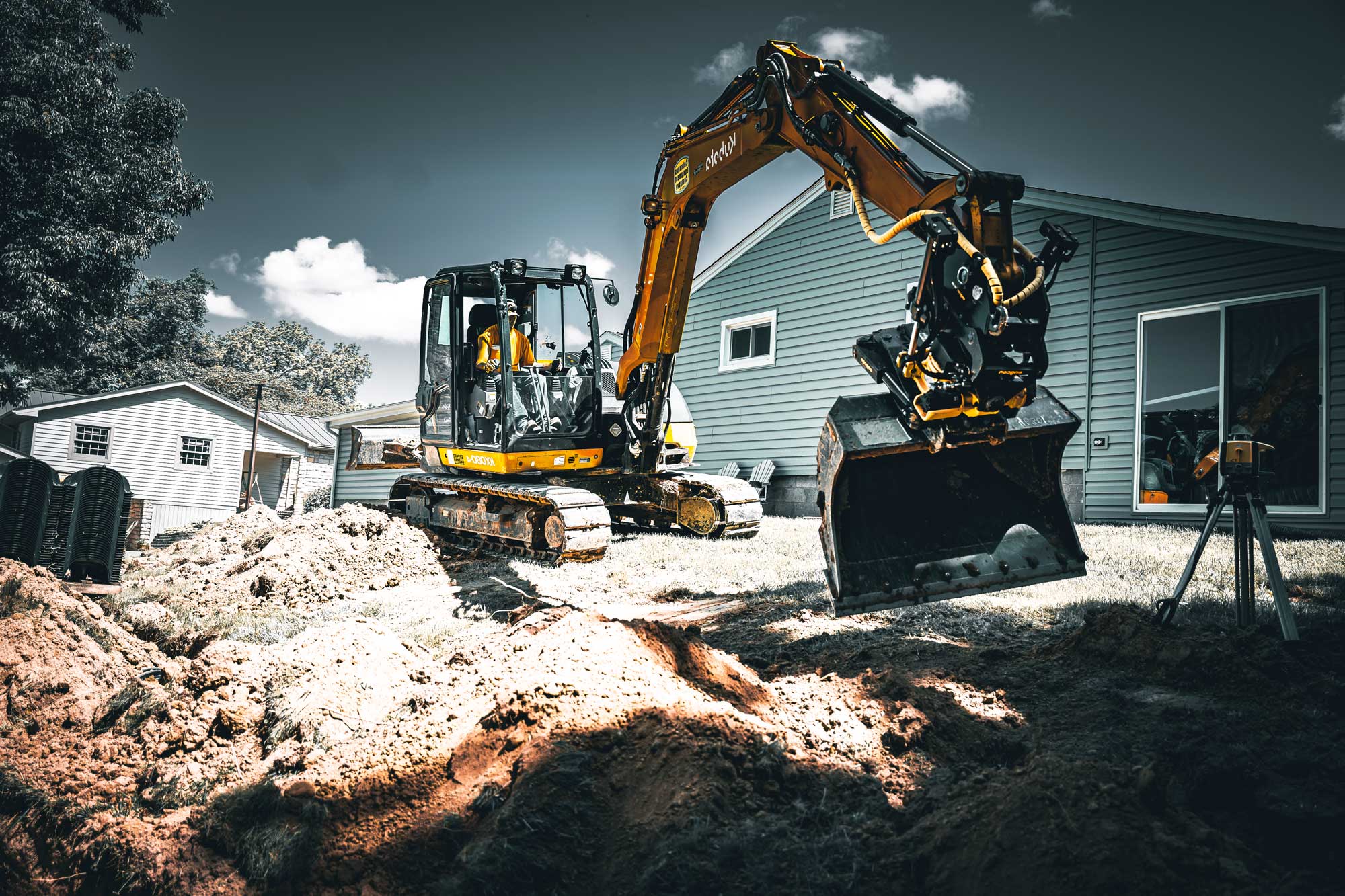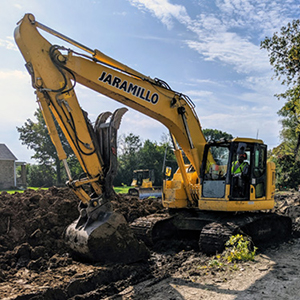Lancaster Trenching - Professional Trenching Solutions in Lancaster, Ohio
Lancaster Trenching - Professional Trenching Solutions in Lancaster, Ohio
Blog Article
Thorough Expedition: The Science Behind Superior Excavation Practices
The world of excavation practices is a domain where scientific research links with workmanship to uncover the secrets hidden underneath the planet's surface. From ancient hand devices to modern hydraulic excavators, the advancement of excavation techniques has actually been a testimony to human resourcefulness and technological innovations. What really establishes exceptional excavation techniques apart is a deep understanding of geological concepts, coupled with the usage of sophisticated devices and approaches. By checking out the science behind these practices, we can reveal the secrets that lie under our feet and value the precision and proficiency that go right into every dig.
Development of Excavation Techniques
Throughout history, the evolution of excavation strategies has played an important role in progressing building and construction techniques and historical explorations. From the primary devices used by our ancestors to the sophisticated equipment utilized in contemporary times, the development of excavation techniques has considerably changed how we come close to various tasks.
In old times, manual work with standard tools such as shovels, pickaxes, and wheelbarrows was the primary approach of excavation. This labor-intensive process restricted the depth and range of excavations, commonly resulting in slow development and limited accessibility to particular sites. Nevertheless, as human beings progressed, so did the devices and techniques used for excavation.
The Industrial Change noted a transforming point in excavation methods with the intro of steam-powered machinery. This advancement changed the field, allowing for faster and extra comprehensive excavations. In modern times, modern technology plays a pivotal role in excavation, with improvements like GPS systems, drones, and 3D scanning improving accuracy and performance in the area. The advancement of excavation techniques remains to shape the means we construct, discover, and understand the world around us.
Function of Technology in Excavation

The integration of sophisticated technology has fundamentally reinvented the field of excavation, boosting accuracy and performance to unmatched degrees. Among the vital technological innovations that has actually dramatically impacted excavation practices is the use of GPS systems. These systems permit exact mapping of excavation sites, enabling operators to accurately locate underground energies and structures. Furthermore, using telematics in excavation devices has actually allowed real-time surveillance of equipment efficiency, bring about proactive upkeep and boosted functional efficiency.
Moreover, the advent of 3D modeling and simulation software program has structured the preparation process for excavation projects. Designers and drivers can currently envision the entire excavation process before beginning, recognizing prospective obstacles and enhancing process. In combination with this, the implementation of drones in excavation activities has actually helped with airborne studies, volumetric measurements, and site inspections with unequaled rate and precision.
Geological Concepts in Excavation
An understanding of geological principles is important for ensuring the architectural integrity and security of excavation websites. Geological aspects play a crucial duty in identifying the expediency and safety and security of excavation projects.
In addition, the geological framework of the location, consisting of faults, cracks, and rock formations, should be carefully analyzed to determine potential threats and challenges. Digging deep into near geological fault or unstable rock developments can result in instability and possible risks. By performing thorough geological surveys and evaluation, engineers and excavators can create techniques to minimize risks and make certain the successful conclusion of excavation projects. Inevitably, incorporating geological concepts right into excavation practices is critical for achieving secure, efficient, and lasting outcomes.

Most Current Tools for Excavation
In the world of excavation methods, contemporary technologies in devices have transformed the efficiency and accuracy of excavation processes. These drones can provide thorough airborne studies of excavation websites, providing real-time information on topography and possible risks.
Another cutting-edge device acquiring appeal is the application of 3D printing modern technology for producing custom excavation tools. This enables for the manufacturing of specialized tools that are customized to the certain needs of a task, enhancing performance and minimizing downtime.
Furthermore, improvements in materials scientific research have caused the advancement of stronger and a lot more durable excavation devices. dump truck companies in ohio. Tungsten carbide-tipped excavator attachments, for instance, offer remarkable efficiency in difficult ground conditions, enhancing efficiency on-site
Scientific research's Influence on Excavation Practices

Furthermore, clinical research on soil technicians and geotechnical engineering has supplied beneficial insights into soil habits, permitting excavation specialists to make informed choices pertaining to excavation methods and soil stabilization methods. On the whole, scientific research proceeds to drive innovation and enhancement in here excavation techniques, making excavation tasks more efficient, affordable, and sustainable.

Conclusion
In verdict, the evolution of excavation strategies has been greatly influenced by developments in technology and a deeper understanding of geological concepts. The most up to date tools and equipment utilized in excavation have enhanced efficiency and accuracy in the field. The application of clinical understanding has substantially enhanced excavation practices, bring about more effective and lasting techniques for excavating numerous kinds of products.
In the realm of excavation methods, contemporary developments in tools have actually revolutionized the efficiency and precision of excavation processes. By leveraging scientific principles, the excavation sector has been able to considerably boost efficiency, accuracy, and safety in excavation processes. GPR permits excavation groups to non-invasively scan and map subsurface frameworks, utilities, and prospective threats, enabling them to intend excavation tasks with better accuracy and decreased danger of crashes.
In addition, scientific research on dirt auto mechanics and geotechnical engineering has actually offered useful insights into soil habits, allowing excavation specialists to make educated this article decisions pertaining to excavation methods and soil stabilization techniques. On the whole, science proceeds to drive advancement and improvement in excavation techniques, making excavation projects extra effective, economical, and sustainable.
Report this page